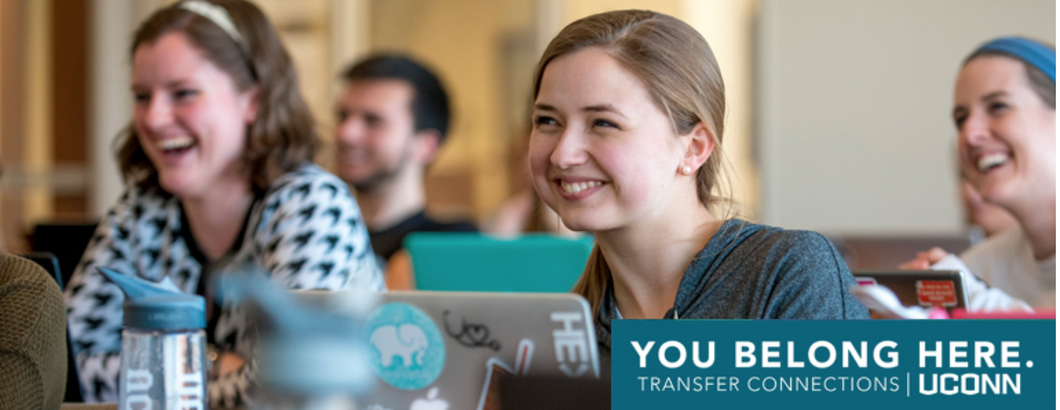The University of Connecticut continues their second semester of Transfer Connections to change the transfer culture.
Most transfer students are aware of Transfer Connections on campus but have not used the resource, because they're unaware of all it entails. The feedback from students such as Ashlyn O'Boyle, 19, Haley Andrews,18, who are both sophomores and Marianna Aperjs,19, junior mostly consist of wanting more events and visibility on campus.
Kelli Peterson, the president of Transfer Connections, explained that it can be difficult to organize more events due to the fact that they are a new group on campus and other contributing factors such as their budget and the abundance of transfers on campus. There were 850 transfer students who enrolled at UConn in just the fall semester of 2018, said Peterson.
"It's hard because there are things that come into play like budgets and since we're so new, we kind of have to establish ourselves before we can cater [to those students]," Peterson said.
Though there are events held by Transfer Connections such as the breakfast that was held before the semester began, any transfer student who is looking for socialization with other transfers should look into the Transfer Student Association, said Peterson. The organization works alongside Transfer Connections to contribute to the culture of transfer students at UConn. Peterson and the Transfer Connections organization personally guided bringing organizations like TSA and Tau Sigma National Honors Society (an honors society for transfers) back to the surface, Peterson said.
"If someone is really looking to meet other transfers, the best way to do that is through TSA," Peterson said.
UConn's transfer students expressed concerns when they discussed the presence of Transfer Connections as an organization itself. These students had specific feedback on how to improve the organization.
O'Boyle made some suggestions on ways to improve the Transfer Connections organization and some things that could have helped while transitioning.
"Maybe before the first day of classes they had us walk around together to find our courses or get accustomed to things," O'Boyle said.
Andrews was concerned regarding getting information from the organization such as basic student necessities on campus, she even mentioned not knowing where health services were for four weeks.
"[I think they should be] informing transfers more about what's on campus and what we could really do with our time here," Andrews said.
Aperjs also made suggestions, such as helping incoming students who may have come from a commuter background adjust to life here on campus and having a resource to help with the transition.
"If they're coming from being a commuter at a community college to here, it is a lot different. Maybe those people would need more help adjusting to living on their own and things like that, without making them feel like freshmen," Aperjs said.
Transfer Connections isn't a social organization as of right now and it should be looked at as an online resource, Peterson explained. Most of what they do as an organization is through their website, She said. There are students on the website who are referred to as "Transfer Insiders" who are there to answer questions for any UConn transfer student, Peterson said.
Many students have reported having a transitioning period when they come to UConn including students O'Boyle and Andrews. They recounted why they left and how UConn had been an adjustment either academically or in terms of getting around campus.
"I personally don't think I had that hard of a time because I went to a larger school my first year. Walking across campus and getting used to that size, like a size lecture hall is about 200-300 kids, wasn't a shock to me when I came here. But definitely academically it's more challenging," Andrews said.
"I came from Eastern Connecticut State University and it was incredibly smaller than UConn. Like, I could walk to the other side of campus probably within fifteen minutes or so- maybe twenty. So, to have to walk to some of my classes and have it take ten minutes to walk to just one of my classes was kind of a shock to me," O'Boyle said.
None of the students had any malice towards their old school, for most it was a change in major or direction of their career. For example, Asperjs mentioned leaving her old school, Purdue University, due to her change in major, which affected her scholarships. The move made sense for her finances and for her career, Asperjs said. Andrews and O'Boyle agreed that there was no "hate" towards their old school, that it was just a matter of bettering themselves and putting themselves in the best position to succeed.
"It's nothing against URI, I absolutely love URI and everyone who goes there and I miss it with all of my heart," Andrews said.
Transfer connections is a support system designed by a former UConn transfer student herself, Peterson. She wanted to do something with transfer students past the role of just advising students who are transfers. The experience of transitioning wasn't super easy for her and because she wasn't a freshman people expected her to just figure it out, said Peterson.
"I meet with transfer students as an advisor but it kind of ends there, like advising, and I wanted to be able to tackle more of what transfers go through," said Peterson.






















